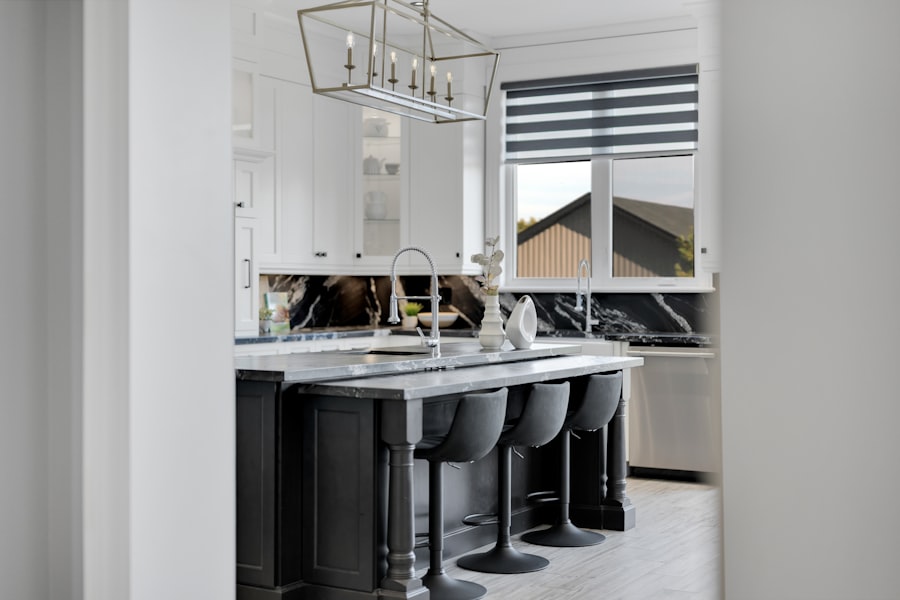Embarking on a kitchen renovation is an exciting yet daunting task that requires careful planning and consideration. The first step in this journey is to define your goals and objectives for the renovation. Are you looking to create a more functional space for cooking and entertaining, or do you want to enhance the aesthetic appeal of your kitchen?
Understanding your priorities will help guide your decisions throughout the renovation process. It’s essential to take stock of your current kitchen layout, noting what works well and what doesn’t. This assessment will provide valuable insights into the changes you need to make.
Once you have a clear vision of your goals, it’s time to set a realistic timeline for the project. Kitchen renovations can vary significantly in duration, depending on the scope of work involved. A simple cosmetic update may take a few weeks, while a complete overhaul could extend over several months.
Establishing a timeline will help you manage expectations and keep the project on track. Additionally, consider creating a mood board or collecting inspiration from design magazines and websites. This visual representation of your ideas can serve as a reference point throughout the renovation, ensuring that your final design aligns with your initial vision.
Key Takeaways
- Careful planning is essential for a successful kitchen renovation, so take the time to consider your needs and goals before starting the project.
- The layout and design of your kitchen should prioritize functionality and flow, while also reflecting your personal style and preferences.
- Investing in high-quality materials and appliances will ensure longevity and performance, so do your research and choose wisely.
- Maximize storage and organization in your kitchen to keep it clutter-free and efficient, with clever solutions like pull-out shelves and drawer dividers.
- Functional and stylish lighting can transform the look and feel of your kitchen, so consider different options like pendant lights and under-cabinet lighting to create the right ambiance.
Choosing the Right Layout and Design
The layout of your kitchen is one of the most critical aspects of its functionality and overall appeal. When selecting a layout, consider the work triangle concept, which emphasizes the relationship between the stove, sink, and refrigerator. An efficient kitchen layout minimizes unnecessary movement and maximizes productivity.
Popular layouts include the L-shape, U-shape, and galley designs, each offering unique advantages depending on the size and shape of your space. For instance, an L-shaped kitchen is ideal for open-concept homes, allowing for seamless interaction with adjacent living areas. In addition to layout, the design style you choose will significantly impact the kitchen’s atmosphere.
Whether you prefer a modern, minimalist aesthetic or a cozy farmhouse vibe, your design should reflect your personal taste and lifestyle. Incorporating elements such as cabinetry style, countertop materials, and backsplash options can help create a cohesive look. For example, sleek stainless steel appliances paired with quartz countertops can evoke a contemporary feel, while reclaimed wood accents can add warmth to a rustic design.
It’s essential to strike a balance between aesthetics and functionality, ensuring that your kitchen not only looks great but also meets your everyday needs.
Selecting High-Quality Materials and Appliances

The materials and appliances you choose for your kitchen renovation play a crucial role in both durability and performance. Investing in high-quality materials can save you money in the long run by reducing the need for repairs or replacements. When selecting countertops, consider options like granite or quartz, which are not only visually appealing but also resistant to scratches and stains.
Similarly, cabinetry made from solid wood or high-quality plywood will withstand the test of time better than particleboard alternatives. Appliances are another critical component of your kitchen renovation. Energy-efficient models not only reduce utility bills but also contribute to a more sustainable home.
Look for appliances with high Energy Star ratings, which indicate superior energy performance. Additionally, consider features that enhance convenience and functionality, such as smart technology that allows you to control appliances remotely or built-in features like steam ovens that expand cooking options. By carefully selecting materials and appliances that align with your lifestyle and preferences, you can create a kitchen that is both beautiful and practical.
Maximizing Storage and Organization
| Storage Solution | Benefits | Cost |
|---|---|---|
| Shelving Units | Maximizes vertical space, easy access to items | |
| Storage Bins | Organizes small items, stackable | |
| Closet Organizers | Maximizes closet space, customizable | |
| Underbed Storage | Utilizes underutilized space, hides clutter |
A well-organized kitchen is essential for efficiency and ease of use. As part of your renovation, it’s important to maximize storage solutions that cater to your specific needs. Custom cabinetry can be designed to fit your space perfectly while incorporating features like pull-out shelves, lazy Susans, or deep drawers for pots and pans.
These elements not only enhance accessibility but also help keep your kitchen clutter-free. In addition to cabinetry, consider utilizing vertical space by installing shelves or hanging racks for pots and utensils. Open shelving can create an airy feel while providing easy access to frequently used items.
Incorporating drawer dividers or organizers can also streamline storage for cutlery and kitchen tools, making it easier to find what you need when you need it. By prioritizing storage solutions during your renovation, you can create a functional kitchen that supports your cooking habits and lifestyle.
Incorporating Functional and Stylish Lighting
Lighting is a vital aspect of any kitchen renovation that often goes overlooked. A well-lit kitchen not only enhances visibility but also sets the mood for cooking and entertaining. When planning your lighting scheme, consider layering different types of lighting: ambient, task, and accent lighting all play unique roles in creating an inviting atmosphere.
Ambient lighting provides overall illumination, while task lighting focuses on specific areas like countertops or islands where food preparation occurs. Pendant lights above an island or dining area can serve as both functional task lighting and stylish decor elements. Additionally, under-cabinet lighting can illuminate work surfaces while adding a warm glow to the space.
Dimmable switches are also worth considering; they allow you to adjust the brightness according to the time of day or occasion. By thoughtfully incorporating various lighting elements into your kitchen design, you can create a space that is both practical and visually appealing.
Adding Personal Touches and Decor

Personalizing your kitchen is an opportunity to infuse your unique style into the space. Decorative elements such as artwork, textiles, or decorative dishware can transform a functional area into a warm and inviting environment. Consider displaying colorful cookbooks on open shelves or hanging framed prints that reflect your culinary interests or travel experiences.
These personal touches not only enhance the aesthetic appeal but also make the kitchen feel like an extension of your home. Textiles also play a significant role in adding warmth and character to your kitchen. Consider incorporating patterned curtains or colorful dish towels that complement your overall design scheme.
A stylish area rug can define spaces within an open-concept layout while providing comfort underfoot. Additionally, plants can bring life into the kitchen; herbs like basil or rosemary not only add greenery but can also be used in cooking. By thoughtfully curating decor elements that resonate with you, you can create a kitchen that feels uniquely yours.
Hiring the Right Professionals for the Job
While some homeowners may choose to tackle their kitchen renovations independently, hiring professionals can ensure a smoother process and higher-quality results. When selecting contractors or designers, it’s essential to do thorough research and seek recommendations from friends or family who have undergone similar projects. Look for professionals with experience in kitchen renovations specifically; their expertise will be invaluable in navigating potential challenges.
During initial consultations, communicate your vision clearly and ask for examples of their previous work to gauge their style and capabilities. It’s also important to discuss timelines and budgets upfront to avoid misunderstandings later on. A good contractor will provide detailed estimates and be transparent about potential costs associated with materials and labor.
By assembling a skilled team of professionals who understand your goals, you can achieve a successful kitchen renovation that meets both your functional needs and aesthetic desires.
Budgeting and Managing Costs
Budgeting is one of the most critical aspects of any renovation project, as it helps ensure that you stay within financial limits while achieving your desired outcomes. Begin by establishing a comprehensive budget that includes all aspects of the renovation—materials, labor costs, permits, and any unexpected expenses that may arise during construction. It’s wise to allocate an additional 10-20% of your budget for contingencies; this cushion can help cover unforeseen issues such as plumbing repairs or structural modifications.
To manage costs effectively, prioritize your spending based on what matters most to you in the renovation process. If high-quality appliances are essential for your cooking style, consider allocating more funds toward them while being mindful of other areas where you might save money—such as opting for stock cabinetry instead of custom-built options. Additionally, consider timing your renovation strategically; purchasing materials during sales or off-peak seasons can lead to significant savings.
By maintaining a clear budget and being proactive about managing costs throughout the renovation process, you can achieve a stunning kitchen transformation without breaking the bank.



